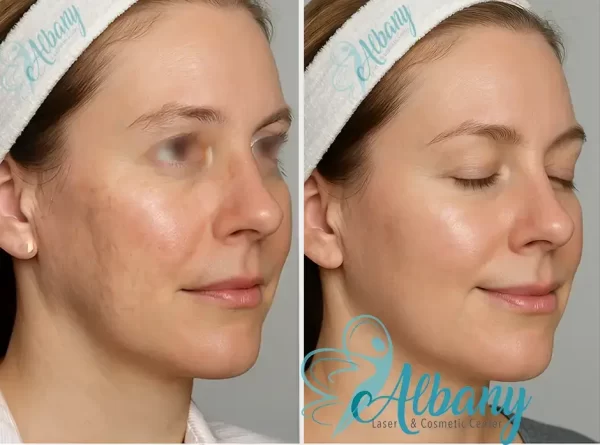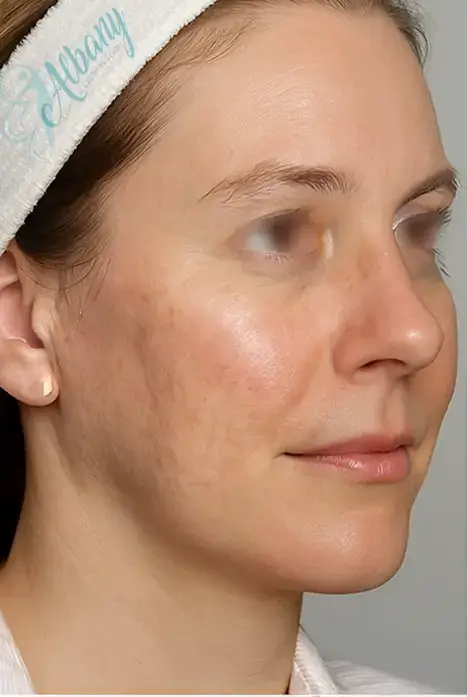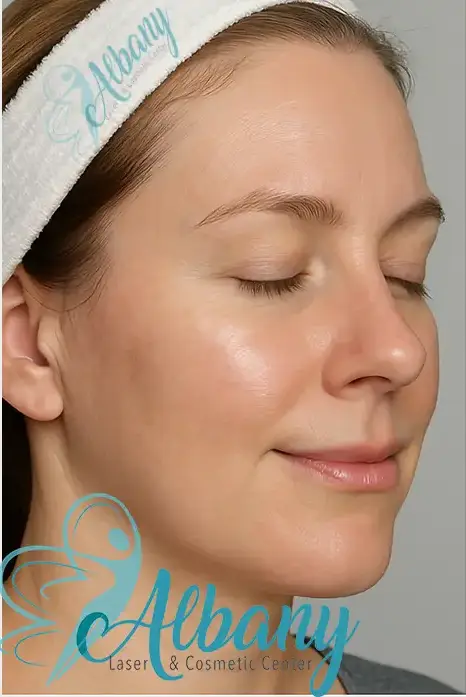Patient Profile
- Age: 42
- Concerns: Early volume loss, fine lines, uneven texture
- Goal: Subtle lift via collagen induction + smoother surface
One Sculptra session
Three CO₂ laser sessions
8–12 weeks to peak glow
Low downtime overall
Treatment Plan
| Step | Purpose | Timing |
|---|---|---|
| Sculptra (PLLA) | Collagen stimulation to restore soft volume in cheeks/temples; improves skin thickness over time. | 1sessions, 6–8 weeks apart |
| Fractional CO₂ Laser | Resurfacing to reduce fine lines, pigment, and pore size; boosts superficial collagen. | 8 weeks after first Sculptra |
Topical anesthetic used. Cannula technique minimizes bruising for Sculptra. CO₂ settings customized to skin type.
Outcome Highlights
- Improved skin luminosity and even tone
- Smoother texture with reduced fine lines
- Subtle structural support from gradual collagen
- Natural look maintained—no change to facial contour
Downtime: 1–2 days (Sculptra swelling). 5–7 days (CO₂ redness/peel). Results build for months.
FAQs
How do Sculptra and CO₂ laser work together?
Sculptra triggers the body to create new collagen for gradual support, while CO₂ laser renews the surface layer, refining texture and tone. The pairing addresses both structure and skin quality.
What is the typical number of sessions?
Most clients receive 2 Sculptra sessions 6–8 weeks apart and 1 fractional CO₂ session. Plans are customized at consultation.
Is there downtime?
Expect mild swelling or tenderness for 24–48 hours after Sculptra, and 5–7 days of redness/peeling after CO₂. Makeup is usually fine after the skin re‑epithelializes.
How long do results last?
Sculptra’s collagen can persist 18–24 months or longer. CO₂ texture improvements are long‑lasting with good skincare and sun protection.


